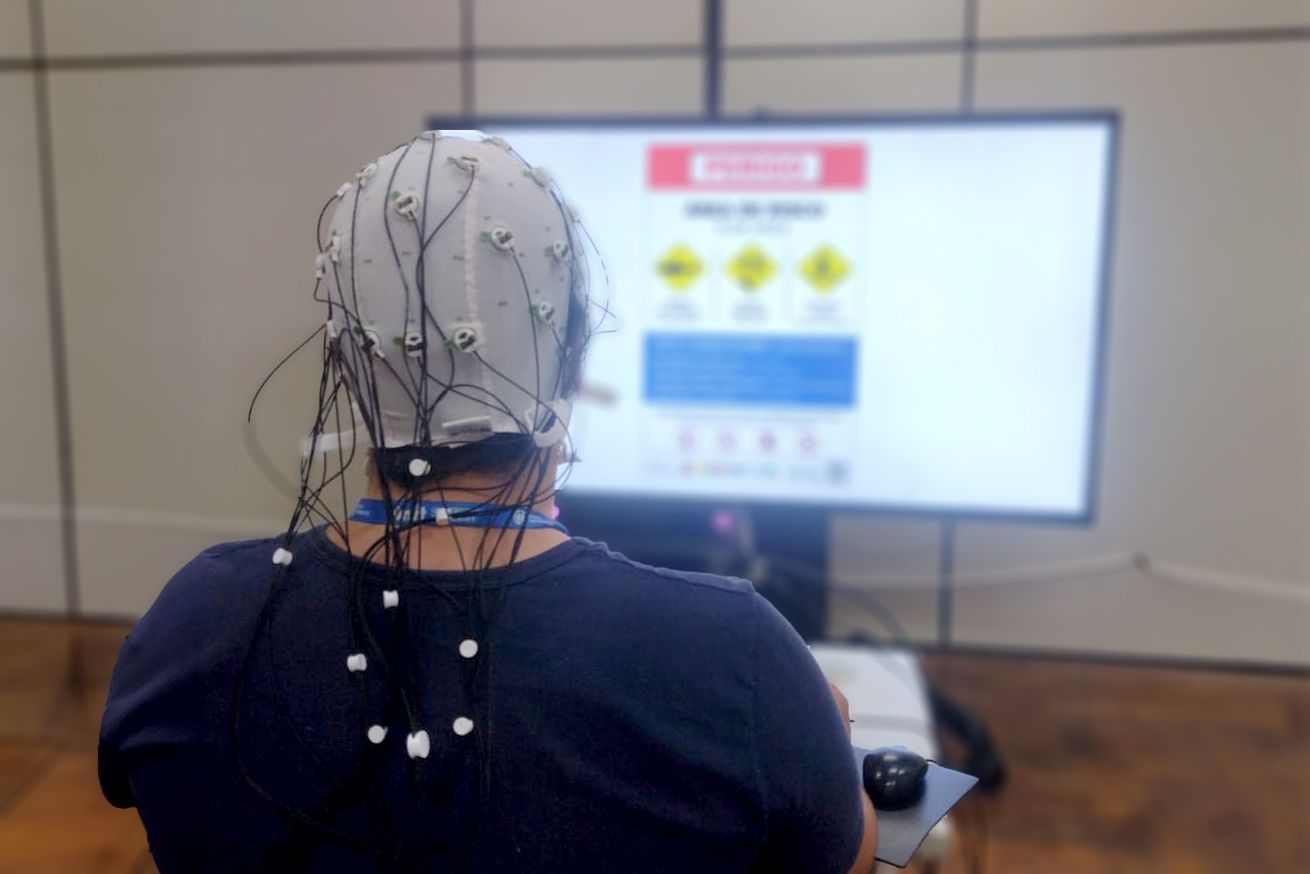The NSID leads innovative research that integrates neuroscience, human behavior, and technology to make coastal environments safer. One of our flagship projects investigates how to improve the effectiveness of risk signage on beaches with a history of shark incidents. To understand how people perceive and respond to visual warnings, we conduct controlled experiments using eye tracking — mapping gaze direction and fixation time — and electroencephalography (EEG) — capturing brain activity related to attention and risk perception.


Based on these data, we develop science-driven guidelines for designing new warning signs, analyzing variables such as color, contrast, shape, and information layout. Beyond static signs, we create dynamic digital models that incorporate motion and interactivity. These solutions are tested in real environments with the support of augmented reality, allowing us to validate their ability to capture attention and enhance risk understanding under natural conditions.
By combining scientific evidence, technological innovation, and social impact, NSID contributes to more effective public policies and prevention strategies, strengthening water safety and supporting sustainable tourism.
